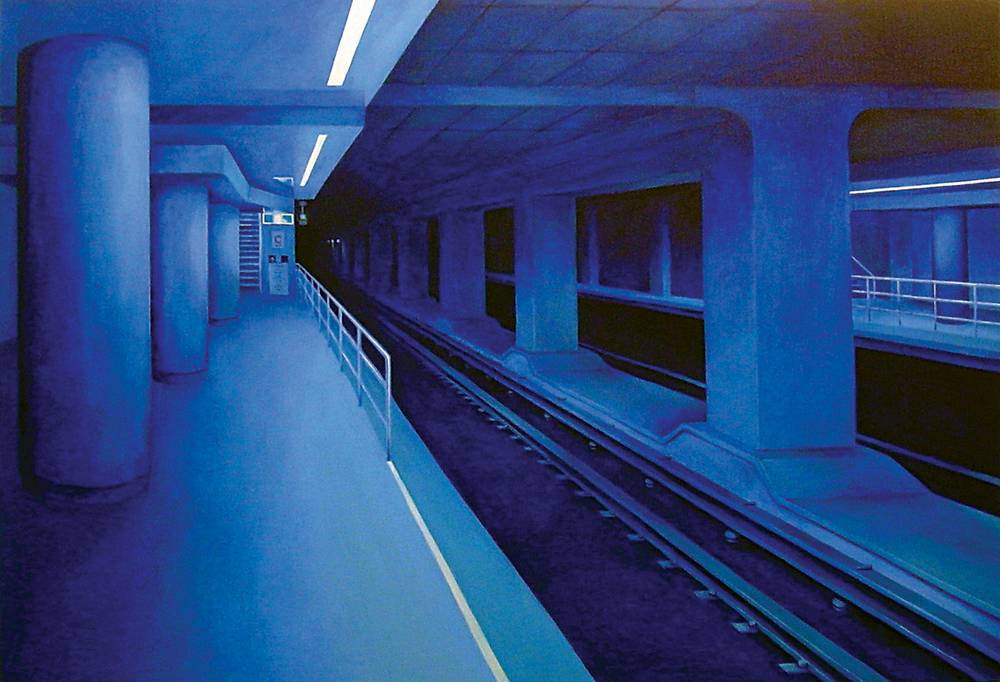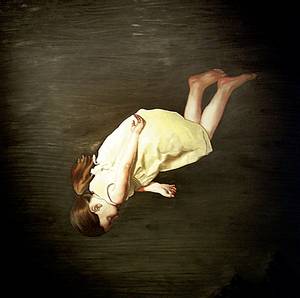Contemporary Arts Collective Director Beate Kirmse, in her first curatorial effort, has chosen two painters whose work could not be more different: Erik Gecas, favoring earth tones and using Old and New Testament stories as his starting point, has his wife and children impersonate biblical characters with a focus on facial expressions; Ayako Ono paints Tokyo train stations peopled with armless and faceless travelers, rendering them exclusively in eerie shades of blue. Kirmse chose to pair these artists because they “do not compete with each other ... they strengthen each other’s uniqueness ...”
The Details
- Painting Physical Presence
- Eric Gecas and Ayako Ono
- Through September 20
- Contemporary Arts Collective
- 101 East Charleston Blvd., Suite 101. 382-3886, lasvegascac.org.
Gecas references Bible stories because he believes they hold universal, immutable truths about human nature, and he’s in very good company. Rembrandt, who also used his family as models, realized the Bible contained profound truths. He knew instinctively that faces were key, because humans have a remarkable ability to transmit a wide range of emotions through facial expression. Gecas must have intuited that as well, and, before attempting his large narrative paintings, did four small studies of his wife impersonating the Bible’s bad girls and disobedient wives. Without any props or costumes, her various expressions tell compelling stories—Eve tempted but wary of the serpent; Salome proud of King Herod’s lustful attention; Lot’s wife letting curiosity get the better of her; and Moses’ wife anguished by the plague. Although modest in size and ambition, they are some of my favorite pieces in the show.
In Gecas’ larger, more ambitious narrative paintings, hands, as well as faces, make important statements. Like Rembrandt, Gecas uses chiaroscuro (light and shade) to make his figures more lifelike. A former sculptor, Gecas takes naturally to this way of painting and uses it to great effect. In “Salome Losing Her Charm,” a dramatically lit and nasty-looking Salome commands our attention, and so do her hands, which seem to take a distinctly unholy pleasure in kneading the flesh of John the Baptist’s severed head (Gecas’ self-portrait).
Gecas’ belief in “timelessness” is central to his religious beliefs and paintings. His “Ten Mis-iss-ippi” conveys this feeling without the mediating influence of the Bible. (The title refers to a way of counting that will be familiar to anyone who has played hide and seek.) It pictures a little girl in a pale yellow dress, curled in a fetal position and surrounded by a luminous black background. She seems to be falling through a boundless space. The painting resonated with me on several layers and reminded me of a scene in 2001: A Space Odyssey, in which the aged astronaut is transformed into a fetus-like being enclosed in a transparent orb of light.
Ayako Ono’s figures also seem at an intermediary stage of being—like a chrysalis is to a butterfly. And her train stations also reminded me of 2001, in this case the cold, sleek space station, where the atmosphere is meant to be dehumanizing. But for Ono train stations have a personal significance as places where she feels less lonely, where, by losing herself in a crowd, she is able to reconsider her identity. Coming from a rigid society like Japan to the place where the idea of reinventing oneself was born, she not surprisingly seeks a new identity.
What is surprising is that she didn’t bring any visual baggage with her. In fact, her reinvention is so complete there’s not a hint of anything overtly Japanese in her work. She uses linear perspective, a Western invention, to render the deep space of long platforms and steep escalators and eschews the vibrant or warm colors associated with Japanese art. Her meticulous rendering of realistic spaces in an unrealistic color combined with figures devoid of faces and arms gives the work a surrealistic character (another Western invention). Everything is painted with great skill and haunted by a sense of loneliness.
Strangely, I was deeply moved by her long horizontal triptych, which dispenses with perspective and homunculi. Here her choice of blue and black makes pictorial sense; a train moving inexorably through the black night is punctuated by windows giving off an unsettling blue glow like beacons or signals in a lonely universe.
Gecas asks, “Who are we?” and seems to answer that we are flawed but transcendent beings connected to each other through a higher being. Ono asks, “Who am I?” and her less certain answer is that she may be one of many lonely beings traveling through a cold and indifferent universe, connected to others in some mysterious way that transcends individuality. Brava, Ms. Kirmse, for bringing them together.
The bottom line: ***


Previous Discussion: